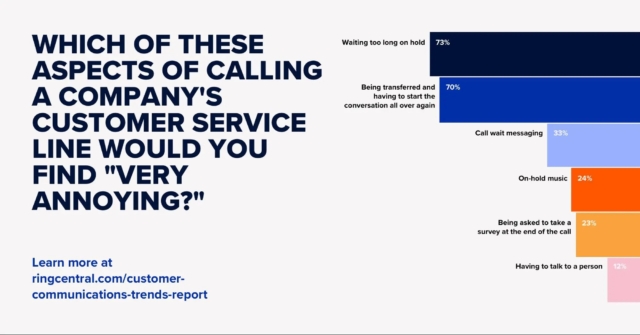Average Handle Time: Executing the 8 Best Practices
Life’s busy for a lot of people. So when they call a contact centre, they don’t want to be waiting for ages.
This is a given. What’s not so widely known is the effect this call time can have on the customer experience and the future prospects for the business. This is why AHT has become one of the most closely analysed key performance indicators in the call centre sector. It’s a very significant call centre metric.
_________
What is Average Handling Time (AHT)?
Average handling time isn’t just the time taken for a conversation to take place. It actually covers the entire period from the call being answered until when the call’s terminated. This includes all the holding and transferring that takes place.
But it doesn’t stop there. It also covers After Call Work (ACW), i.e. the follow up time spent completing data entry and updates after a call.
So, one can see that AHT refers to a larger area of business activity than just picking up a phone, talking to a customer, and putting the phone down.
_________
Why is AHT important?
It’s because of this plurality of ingredients that AHT’s important. It gives us a health update on a number of processes that are vital to the success of a business.
Beyond this, it can have a huge impact on customer happiness. A good AHT helps to satisfy a customer, and a high AHT will put a customer off future dealings with you. The significance of the speed with which a business responds to a customer is starkly illustrated below.
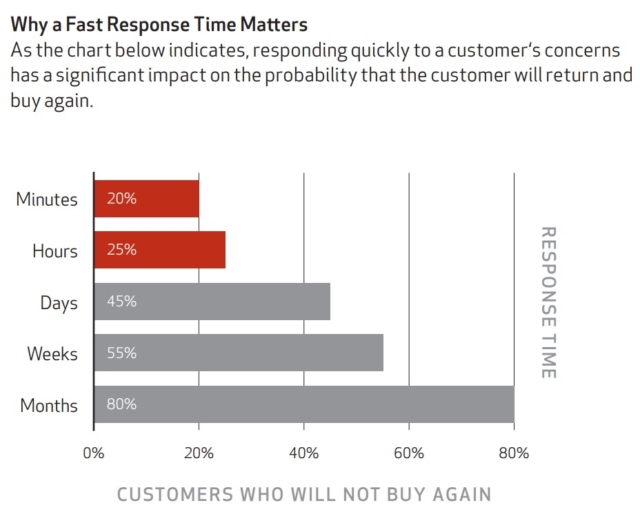
Speed’s vital in customer interactions from first contact to fulfilment and beyond. For this reason, AHT is considered one of the five most important metrics for determining CX, along with answering speed, first call resolution, customer satisfaction score (CSAT) and Net Promoter Score (NPS).
_________
What is considered a good AHT and how can you calculate it?
AHT has various industry standards. This is to be expected. It’s bound to take less time to sort out a missed delivery than to navigate a customer through some complicated installation matter.
Consequently, call centres dealing in delivery concerns have an average call handling time of around 4.45 minutes, while the telecommunications sector displays an AHT of approximately 8.8 minutes.
Overall, call centres average out at about 6.5 minutes. Doesn’t sound too long, does it? However, six minutes on hold punctuated by a total of 30 seconds of conversation will probably not make for an optimally satisfied customer, so we have to look closer at how we can trim those times. We’ll do that below.
Before that, we need to see how to calculate AHT in the first place. It’s arrived at by adding up all the call handling times and then dividing this figure by the total number of calls handled that day.

So, a contact centre taking a total call volume of 9550 customer calls, with these calls (meaning total talk time plus total hold time plus ACW) totalling 101762.5 minutes, will have an AHT of 10.66 minutes. (This would be a figure of some concern to the management, clearly.)
_________
Handling time vs call duration
It’s important to note that AHT doesn’t usually include the initial time spent on the phone waiting for it to be answered. This is captured in the Average Duration, or Call Duration, metric. It’s obviously desirable to whittle away at the time taken to answer the phone, but that’s not what we’re looking at here today.
_________
Factors that affect AHT
After call time efficiency
Once the call’s over, there’ll usually be a period spent updating records or sending information on to a relevant party. It’s vital that the agent charged with this task is trained to a sufficient standard so that they can perform this work in a speedy but effective manner.
It’s also important that any interaction that they need to perform as part of ACW is made as straightforward as possible. For example, let’s say that some of the results of a phone call need to be transferred to another part of the business, but they’ll only take this information via an internal call. If they’re habitually unable to pick up that phone in a timely fashion, that’s time that will be added on to the AHT.
Dead air
It’s every radio station manager’s nightmare, and it should loom large in the terrors of a call centre manager too. What is it? In this context, it’s when nobody’s talking on the line. Why this might take place can be down to a few factors, such as waiting for something to load on the system.
Whatever causes it, it’s hugely undesirable as it’s unproductive call time. This is sometimes called a Non-Value Added (NVA) activity. More than this, though, it can make the customer feel uncomfortable, and it can lead to call defection.
Long hold time
Long hold time‘s a major NVA activity. It contributes to AHT but does nothing to deliver satisfaction to the customer. If anything, it has the opposite effect.
Most customers will understand the need for a moderate level of holding while an employee consults a source or while a process is undertaken. Longer hold times, however, only produce frustration, anxiety, and in some cases, anger. Sometimes, a caller will abandon the call mid-hold if it goes on too long.
Slow systems
There’s no getting away from it. If your system’s slow, there’ll be delays in fulfilling a customer’s needs. Whether this means dead air or extended average hold times, it will impact your AHT in a big way. Slow systems can, in fact, affect the whole omnichannel operation, which adds to staff frustration, which may, in turn, impact their performance levels.
Poor agent training
Sometimes, training can fall by the wayside. Indeed, the amount of time in an average manager’s day spent on this important task is often dwarfed by admin duties.
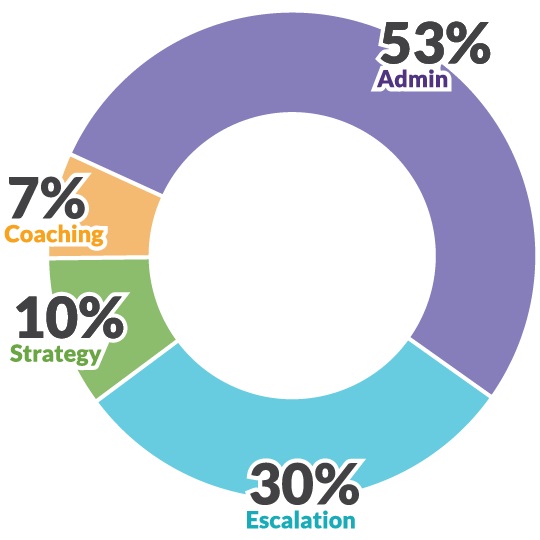
In the pursuit of KPIs and profit, it’s easy to overlook the hugely important part played by having staff who simply know what they’re about.
Maybe, once in a lifetime, a manager will get lucky and have a team that just knows instinctively what to do and how best to do it. Most of the time, however, training is needed. Otherwise, a call centre runs the very real risk of having calls mishandled.
At best, this will add to AHT as the employee struggles to assist the customer and wastes time restating the problem and trying to find the right solution. At worst, it’ll result in immediate customer defection.
So, make sure that whoever a customer talks to, they’re up to the job. Train them. Even if they then leave and you think that was a waste of effort, there are worse scenarios.
‘‘The only thing worse than training your employees and having them leave is not training them and having them stay.’’
– Henry Ford
Not maximising resources
Training will not help much, however, if the information that staff need to perform their jobs is not immediately available to them. There should be an Internal Knowledge Base (IKB). It’s tough to stay on top of all the changes that occur in a large organisation, particularly in terms of new products, new prices, etc. A well-tended dynamic IKB is invaluable in delivering up-to-date information to staff who need it in a hurry. So ensure your staff know how to use it.
It’s a good idea to take staff through all the information that’s available on the company website. The data that’s available to customers via self-help portals and FAQ lists can be just as useful to staff members in that it’s hopefully good, reliable, and to the point.
Information’s obviously a massively important resource. So is staffing – if a call’s forwarded to somebody who’s already tied up on another call, then wait times will rise along with AHT.
Transferring difficult calls to other departments
As mentioned, a long hold time can wreck your AHT. If difficult calls are being put through to other departments more than absolutely necessary, then this won’t help matters.
The more that your frontline operator can competently take on, the better the outcome for your AHT and for the customer. So, again, do the training.
Inactive listening
It’s important for the person doing the talking in a conversation to feel heard. When face-to-face, this is often signalled by visual cues: eye contact, smiling, nodding and so on. On a phone call, however, it all has to be done audibly.
So the caller will want to hear a few positive noises along the way to show that the agent’s very much taking on board what’s being said. The odd ‘uh huh’ and the occasional ‘I see’ will go a long way in terms of making that customer feel that they’re being taken seriously. But this degree of engagement’s not just for the customer’s sake.
‘‘You cannot truly listen to anyone and do anything else at the same time’’
Scott Peck, author.
While some may be tempted to engage in some other activity while the customer unloads themselves, it’s never a good idea. The chances are that the agent will find themselves unable to comprehend the entire issue and will give a suboptimal solution.
The worst may happen, and the employee may have to ask the customer to tell them the situation all over again. This is such a faux pas. So, make sure your staff know how to listen, and how to let the customer know that they’re listening.
_________
Best practices to reduce AHT
OK, so we now understand what AHT is and what can affect it. The important thing as far as your customer service operation is concerned is how to reduce it.
Using the right tools and having the right knowledge-base
Ensuring that your staff have the right tools has already been touched upon. It should be fairly obvious in any case that staff without access to the gear they need are going to flounder.
What’s not so obvious is that customers need to be given tools too. If they have the right resources and are prompted to use them, it can take a load off your staff, and everyone will go home happy.
One example of this is the website self-service resources that you should have prominently displayed so that customers can avail of plenty of wisdom regarding all manner of products and services. It tends to be a popular customer support route. It’s quick and clear, and it probably makes them feel like they’re masters of their own destiny.
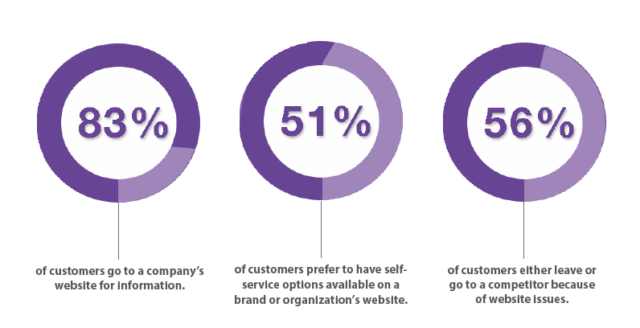
So, how does this help reduce the AHT? Because if a customer has seen the FAQ page and still needs to call, this means that the agent can probably go ahead and rule out all the solutions on the website and proceed to trying out some of the more particular approaches in their armoury. In other words, they can cut to the chase.
Another great tool for customers to use is interactive voice response (IVR). This is a system built on automation that handles customer interactions by routing the caller to the right person. This has a very clear reduction effect on AHT because the caller will stand more of a chance of speaking to the right person straight away, i.e. less chance of transfers and protracted hold times.
We’ve touched on the effect that an Internal Knowledge Base can have. There are certain aspects worth emphasising here.
The staff should be encouraged to check it even when they’re pretty sure they know the answer. The reason for this is that most call centres are very dynamic environments, changing all the time. A conscientious agent will want to give the most up-to-date information to a customer, so make sure they get into the habit of checking the IKB.
Ensure also that staff are continually recording what’s being discussed. An IKB isn’t just about the nuts and bolts of a product. It should also contain current trends regarding customer issues so that staff can keep on top of developments and trends can be accommodated. Conversation subjects should be collated and categorised for easy access (with a powerful search function).
Agent performance and live call monitoring
from time to time. It’s very easy to fall into the trap of regarding oneself or one’s staff as proficient and not needing further supervisory input. The truth is that bad habits do creep in, and complacency can take hold. We should guard against this.
‘‘Complacency is the forerunner of mediocrity. You can never work too hard on attitudes, effort and technique’’
– Don Meyer, US basketball coach
It’s as true in the contact centre as it is around the hoops. You can’t afford to let your team get slack. For this reason, it pays to monitor your call centre agents.
You can do this in a number of ways. RingCentral, for instance, provides a great range of tools that include call monitoring software. Cloud-based solutions such as these are simple to install and learn to use and can be up and running in very little time.
Managers are given a number of ways to monitor call centre agents, including speech analytics and call transcriptions, that lend themselves well to live monitoring and recording for later attention. With live monitoring, managers are given all the information they need to coach staff in real time, or, in the worst cases, directly intervene and take over the call should they feel this is necessary. Follow-up training can then take place.
Specialise agent training
A lot of the time, your agents will have all the ability in the world to deal with a customer – they know the tenets of customer service, and they’re generally pretty capable individuals. However, they may fall at the hurdle of specialised knowledge.
Yes, the IKB is there, but staff should never be ignorant of certain facets of the product that do not change over time. To coin an exaggerated example, if your business is selling guitars, all your staff should know that these are not wind instruments and are not likely to become so.
So, do ensure that the ingredients that go into your specialist area are soundly grasped by all your employees. Otherwise, the AHT will suffer as your staff look for information on what makes a guitar a guitar.
Provide scripts for common customer queries
When your support team have amassed a large number of queries on a given topic, it makes sense to try to streamline this area a little. One of the best ways is to give your staff a script so that you can be sure that all necessary information is given out in a time-efficient manner. This will take a fair amount of time off that AHT.
However, there’s a caveat. People hate to be treated like part of a herd, so the staff need to try to imbue the script with a bit of spontaneity and humanity. But they have to do it without losing the benefit of having a script in the first place.
Some staff will find this easier than others. Those that struggle will doubtless benefit from a bit of mentoring, which is where that live monitoring will come in handy.
Optimise call routing
If you have an IVR system, make sure it’s kept up to date with the right people on the right numbers. If not, ensure that everyone has a list of numbers that they’re likely to use, and, again, keep it up to date. And don’t forget to make sure that everyone knows how to forward a call. These are the sorts of things that get overlooked and can result in a needlessly high AHT.
Maximising analytics for better guidance
Real-time contact centre analytics can respond to what’s being said and add information to the desktop accordingly. If somebody wishes to change their address details, for instance, speech analytics will pick this up and automatically deploy the right fields from the CRM for the agent to amend. This rapid response to data points clearly shaves time off your AHT.
Placing struggling agents beside a low AHT agent
Nothing succeeds like success. Let the infectiousness of good practice take hold. There’s no substitute for seeing an expert ply their trade, so sit someone who could be doing better alongside your maestro and tell them to watch and learn.
The high performer will feel pretty pleased that they’re being used as a model, and the agent who’s not-so-exemplary will be glad of the chance to learn. It’s a win-win.
Setting up a post or pre-huddle
As in most areas of customer service, communication’s everything. The more you can get your staff to work as a team, the more productive your outfit will be. Huddles are a great way of instilling team focus. They’re terrific for success visualisation and salient information updates pre-shift and just as good for unwinding and more updates post-shift.
Most agents don’t like to feel that their struggles are theirs alone, so it’s good for well-being and team productivity to be able to share experiences. That goes for tales of trouble alongside the more uplifting stories – it’s all part of the working day, after all.
It’s important to attend to the morale of all staff of course, but especially call centre frontliners who tend to suffer a relatively high attrition rate.
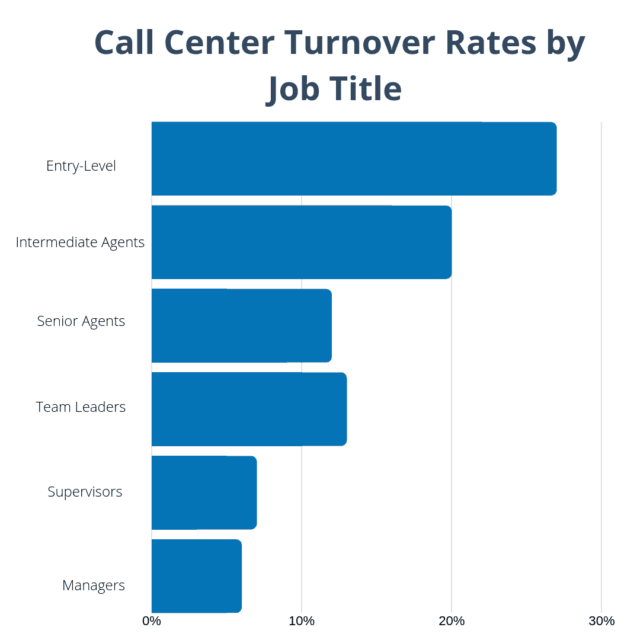
The more you can do to counter this while also tackling your AHT, the better.
_________
Get started with these AHT best practices
What’s great is that most of these AHT reduction techniques provide the benchmarks for an excellent customer service operation. If a company’s trying to reduce the average amount of time a person has to wait on the phone, then they’re sending out messages that it’s working hard to enhance the customer experience. It’s this kind of plus that can be spread fast on social media, and you’ll reap the benefit in an appropriately short time.
Originally published Jul 11, 2022, updated Mar 14, 2024


